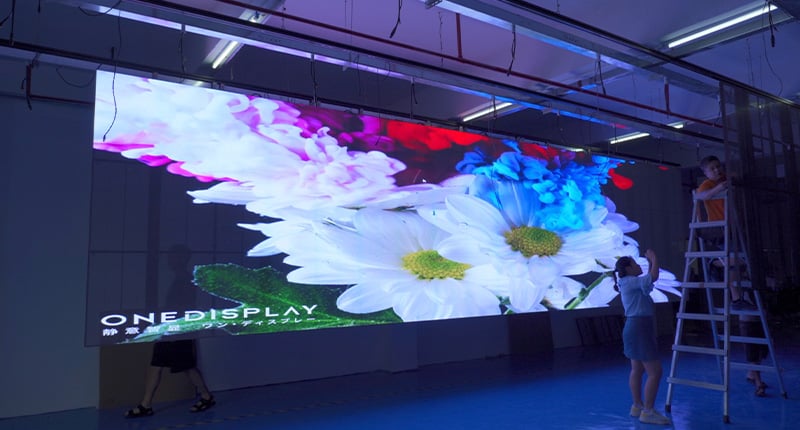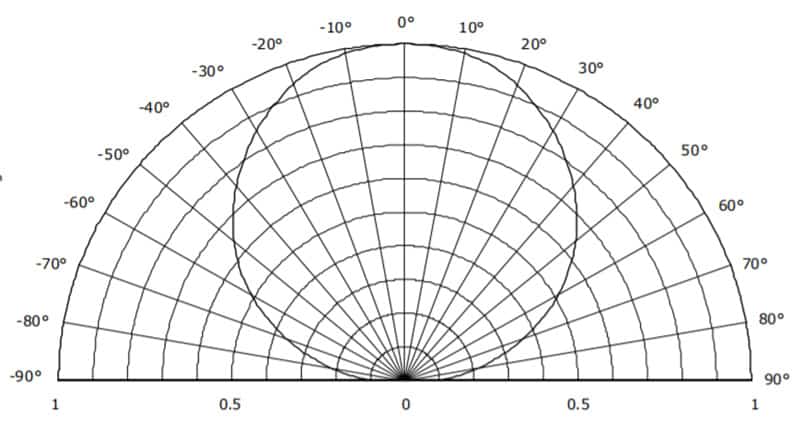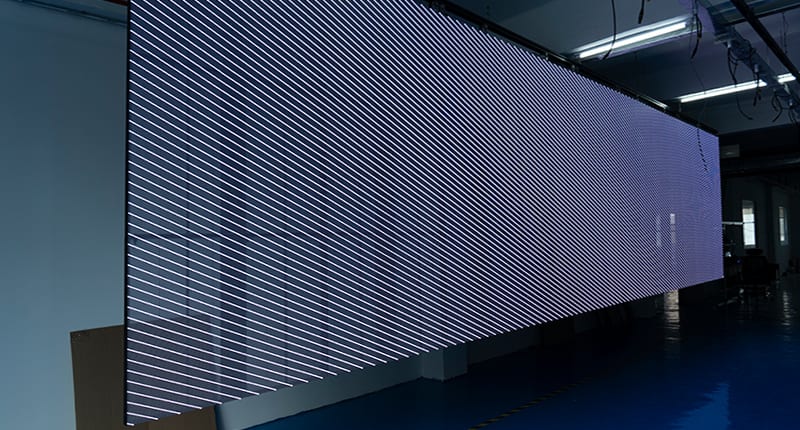As the most expensive and most used component of LED display screens, LED lamp beads are a very important part of LED display screens, so what impact will different lamp beads have on the display screen? The impact of LED lamp beads on the LED display is mainly manifested in the following aspects:
1. Brightness of the Led Display
LEDs’ brightness is an important determinant of display brightness. The higher the brightness of the LED, the greater the margin for the use of current, which is good for saving power and keeping the LED stable.
LEDs have different angle values. When the brightness of the chip is fixed, the smaller the angle, the brighter the LED, but the smaller the viewing angle of the display. Generally, At least choose a led display with a viewing angle of 100 degrees or more to ensure a sufficient viewing angle of the display screen.
For displays with different dot pitches and different viewing distances, a balance should be found in brightness, angle and price.
2. Viewing angle of the Led Display
The viewing angle of the LED display is determined by the viewing angle of the LED lamp beads. At present, most outdoor LED displays use horizontal viewing angles of 100, elliptical LEDs with vertical viewing angles of 50°, while indoor displays use SMD LEDs with both horizontal and vertical angles of 120°.
Some high-rise display screens have higher requirements for vertical viewing angles. Viewing angle and brightness are contradictory to each other, and a large viewing angle will inevitably reduce brightness. The choice of perspective needs to be determined according to the specific purpose.
3. Lamp beads quality and failure rate
The LED display is composed of 10,000 or even hundreds of thousands of red, green, and blue LED lamp beads. LED lamp beads slowly decay with the use of time. LED lamp brightness decay speed and LED chip, auxiliary materials, packaging process have a certain degree of correlation.
In general, after 1000 hours and 20 mA normal temperature lighting test, the attenuation of red LED lamp beads should be less than 7%, and the attenuation of blue and green LED lamp beads should be less than 10%. The consistency of red, green, and blue attenuation has a great influence on the white balance of the full-color LED display in the future, and thus affects the display fidelity of the display.
At the same time, good lamp beads have a low failure rate, according to industry experience, the failure rate from the start of the assembly of the LED display to the 72-hour aging before shipment should be no more than three ten thousandths (referring to the failure caused by the LED lamp beads itself).
4. Antistatic ability of LED Lamp beads
LED is a semiconductor device, which is sensitive to static electricity and can easily cause static failure. Therefore, the antistatic ability is very important to the life of the display screen. So which aspects can improve the antistatic ability of LED lamp beads?
- In the choice of a chip, it is necessary to select a chip with better quality and better effect and reduce the influence of static electricity on the chip.
- The packaging process is also very large for the anti-static ability of LED lamp beads. In the packaging process, anti-static clothing should be worn, with an electrostatic ring, and the electrostatic ring should be well-grounded.
- In the LED packaging production line, it is very important that the grounding resistance of various types of equipment meets the requirements. Generally, the grounding resistance is required to be 4 ohms. In some cases where the requirements are high, the grounding resistance is more stringent or even ≤ 2 ohms.
Generally speaking, the failure voltage of the human body electrostatic mode test of the LED should not be lower than 2000V.
5. Working Life of LED Display
It is estimated that the average lifespan of an LED display is between 60,000 and 100,000 hours, depending on the use of the screen, which is much longer than the working life of other parts of the LED display. Thus, in the best-case scenario, this would be equivalent to using an LED screen for six hours a day for 45 years.
Therefore, as long as the quality of the LED device is guaranteed, the working current is appropriate, the PCB heat dissipation design is reasonable, and the display screen production process is rigorous, the LED device will be the entire display screen. One of the most durable parts of the machine.
Here are our tips to increase an LED display’s lifespan:
- Avoid places that are too wet or too sunny
- Always place your screen on a flat surface
- Use a surge suppressor and a voltage regulator
- Do not touch the screen with your fingers
- Use a surge suppressor and a voltage regulator
6. Consistency of Display effect
The full-color display is composed of countless red, green, and blue LEDs. The brightness and wavelength consistency of each color LED determines the brightness consistency, white balance consistency, and chromaticity of the entire display.
Since the LED is angled, the full-color LED display also has angular directionality, that is, when viewed from different angles, its brightness will increase or decrease. In this way, the angle consistency of the red, green, and blue LEDs will seriously affect the consistency of the white balance at different angles, and directly affect the fidelity of the video color of the display screen.
To achieve the matching consistency of the brightness changes of the red, green, and blue LEDs at different angles, it is necessary to strictly carry out the scientific design in the package lens design and raw material selection, which depends on the technical level of the package supplier. No matter how good the white balance is in the normal direction, if the LED angle is not consistent, the white balance effect of the whole screen at different angles will be bad.
And finally, to have color consistency throughout an LED display, color calibration is a must! Because all LEDs have different color ranges, calibration is able to find the common value of brightness and intensity throughout the LEDs. We can ensure quality displays by its calibration process.
7. Size of Led lamp beads
In the premise of the dot pitch remains unchanged while the LED lamp beads size increases, the display area will increase, too. However, with the reduction of the black area, the contrast will be weakened. On the contrary, when the size decreases, the contrast will be improved.
Last, How to Choose LED Lamp Bead?
After knowing the influences that LEDs bring to the whole screen, you may have already realized the importance of choosing great, high-quality LED lamp lights for your functional LED display. So, how we can choose the right products? There are some tips for you.
- Checking the solder joints. LED manufacturers usually use the SMT SMD process and apply solder paste and reflow soldering technology.
- The cleanliness of the surface of LEDs. If applied SMT process, the surface should be clean without too many impurities and stains.
- The chip. The chip is the decisive factor that determines the overall quality of lamp beads. In general, the more stable the chip is, the brighter the LED lamp beads are, and the better the heat dissipation is.
- The glue. Generally, good products will apply imported glue, and the lamp beads will not deform when pressed by fingers but low-quality ones will appear deformation or even cracking.
- The packaging technology. High-quality LED lamp lights can perform uniform color and good consistency, and this is inseparable from good machinery and equipment.
- Color consistency. Poor quality lamp beads will appear in brightness disunity, and there may be obvious dark areas.
- Reliable suppliers. Choosing suppliers with a good reputation such as NationStar, Kinglight, Hongsheng, Huaxin, and so on can reduce the risks of performance failure.
Resource: Led Display Lamp, Which Brand Supplier is The Best Choice?



